![How To Deal With Sensory Overload [9 Tips For Overstimulation]](https://happyrubin.com/wp-content/uploads/2019/12/ik-ben-overprikkeld-150x150.jpg)
Mindfulness Exercises: 87 Simple Mindfulness Techniques

Here you will find 87 mindfulness exercises. There are also many short and simple mindfulness exercises to be found here. Fortunately, there are many techniques that only take one, two or three minutes. Below you will find all mindfulness exercises in a row. Read along…
The exercises in this article consist of the standard exercises from the scientifically supported 8-week program and they are supplemented here with many more active and quiet exercises and techniques.
The mindfulness exercises, techniques, activities, meditations and assignments are clearly written in text. Simply online, here on this page. This makes it easy to consult them for your attention training. Let’s start with the first short mindfulness exercise …
Contents of this page:
Mindfulness exercise 1 – Do nothing for two minutes (by Dr. Vincent van der Burg)
This striking mindfulness exercise by Dr. Vincent van der Burg takes you straight to the essence of mindfulness: not doing so much. Just ‘do’ it …
Variation 1:
Do nothing for 2 minutes. Just sit down without having a goal. You stare aimlessly in front of you or you close your eyes and that’s all. This is an excellent way to start your day. If you want to know more about why this works so well, read the article about Zen .
Variation 2:
Because the first variant on paper is not a mindfulness exercise (mindfulness is an object on which you rest your attention), you can also choose to let your attention rest on your breathing while you sitting. It’s okay to alternate between these variants.
More mindfulness applications of Dr. Vincent van der Burg can be found in his book.
Mindfulness Exercise 2 – Counting Meditation: Count your breath or your thoughts
This is very simple: you start from 1 and you start counting your breaths. This works the same as counting sheep. When you notice that your attention has disappeared, just start over at 1.
You can do the same with your thoughts. While you just sit in silence, count every thought that comes to mind. How many thoughts have you counted in 10 minutes? Consider it a challenge to count fewer and fewer.
Mindfulness Exercise 3 – Eat Mindfully: Mindful Eating

This is also very easy. It can never be too difficult to just eat your sandwich without scrolling through Facebook in the meantime. You don’t have to mindfully eat an entire meal. A few bites is enough.
How can you eat mindfully? Pay attention to what you see, smell, taste, what temperature you feel, what texture you feel and other feelings and sensations you notice. With attention, without distraction from a telephone, newspaper, thought or conversation. For example, you can do the following things:
- Take time for your food.
- Use all your senses.
- Chew and swallow consciously.
- Wait a while before taking another bite.
- Eat without a television, smartphone, magazine or book.
- Have a cup of tea for yourself, relax and enjoy. Just the tea and you. A moment to unwind.
Also view the comprehensive step-by-step plan for mindful eating.
Mindfulness Exercise 4 – Pay attention to the surrounding sounds
It is almost never completely silent wherever you are. And even if it is quiet, listen to the silence!
Mindfulness Exercise 5 – Watch something as if you were seeing it for the first time
This means that you are really going to research it. How does it feel? What do you see in it? What can be discovered about it? This is perfect for when you are waiting somewhere. Take, for example, a leaf on a tree, an empty cup of tea or a stain.
Mindfulness Exercise 6 – Notice the Silence (Between Your Thoughts)

Your thoughts come and go throughout the day. In this exercise you will pay attention to the silences between the thoughts. There are indeed empty spaces between your thoughts: it is not an endless stream that goes on continuously!
Mindfulness Exercise 7 – Consciously drink a cup of tea
This is very simple: you take a sip very slowly. You pay attention to the taste and the feeling on your tongue. When you swallow it, you can feel it in your throat. You repeat these steps until your tea is finished.
Mindfulness exercise 8 – Squeeze your hands, dance and / or sport: this will hit your body
Let’s start squeezing your hands. This little mindfulness exercise may sound crazy, but by feeling what sensations you feel in your body, like in your hands, you get into your body (and therefore out of your mind). Worrying does not stand a chance in this way. For this exercise, simply squeeze one of your hands (with another hand).
Also pet something, such as a pet or pet or your mouse pad. Using your sense of touch brings you into your body. So just touch something nice.
Dancing and exercising is also very mindful: you are more concerned with your body and less with your head. So include a 30-minute sports class in your schedule on as many days as possible.
More ways to go from head to body can be found here.
Feel your body consciously.
Mindfulness Exercise 9 – Do automatic things consciously
A very nice short mindfulness exercise is doing automatic things consciously, such as brushing your teeth, washing hands, opening door handles, walking, etc.
Stop turning it into an end. Enjoy climbing the stairs yourself. From every aspect.
So do something that is normally routine for the coming period, now with attention. Choose a daily activity to bring your full awareness and slow it down, such as …
- Toothbrushing
- Take out the trash
- Showering
- Dry
- To dress up
- Bicycles
- Feeding a pet
- Do the dishes
- Shop
- Read to children
- Getting in and out of your car
- Open a door
- walk
- Prepare meals
- Take a walk
- Food
You may choose one or more to be mindful all week. Your attention is 100% on what you see, hear, feel, smell and taste.
If you have a cup of tea, know that you are drinking a cup of tea.
Mindfulness Exercise 10 – Sit and Watch the Show

This is a very ‘scary’ technique for many people. Hardly anyone dares to do this. We always look for an activity so that we are distracted from it …
What exactly are we talking about here? Watch your thoughts. Just sit down to observe your thoughts. Just you and your thoughts. Nothing else. Think of it as a show.
Think how crazy it is, but we are afraid to be stuck with just ourselves. Just sit. We are so afraid of that. We always find a distraction to not be “left alone with our thoughts.” So do it and notice how redeeming it is to be with yourself. Sit and watch the show of your thoughts.
Looking at your thoughts does not mean stopping your thoughts. You simply step out and observe them. Now there is no more identification with the thoughts.
A well-known metaphor for this is to look at your thoughts as if they were bumper cars. You do n’t get into the chaos, but you keep looking at it as an observer . Without judgment.
Stop distracting yourself for a while and run away from your thoughts and emotions. Just turn in, trust, let go, allow and flow … Just by sitting in silence.
Check the bottom of this article on worrying to find more metaphorical meditations for observing your thoughts (like the weather forecast metaphor!)
Mindfulness Exercise 11 – “What Does This Situation Require ?”
In your daily life, experiment with the question: “What does this situation require now ?”
Mindfulness Exercise 12 – Writing Down Pleasant Events
Keeping a diary is midful because you are more aware of what goes on in a day. For each day, write down one happy event in your journal that took place on that day. Take the following with you:
- What was the pleasant experience / event?
- Were you aware of it when it happened?
- How did it feel? How did your body feel? And what emotions and thoughts did you have during this activity?
- What do you notice about yourself while writing, for example about your thoughts?
Mindfulness exercise 13 – Incorporate short yoga moments into your day and improve your (work) posture
This tip is not without reason here. It’s not like we have to do yoga in between work because we enjoy it. Sure it’s fun, but it’s also incredibly important for your health. If you sit for longer than 25 minutes in a row, your back will already be damaged.
For a short time, incorporate a number of yoga poses and stretches into your daily life. This helps your body to connect with the present moment and to stay healthy, strong and pain-free. The invitation is to do this every day during this week.
Mindfulness Exercise 14 – Read a novel or poetry
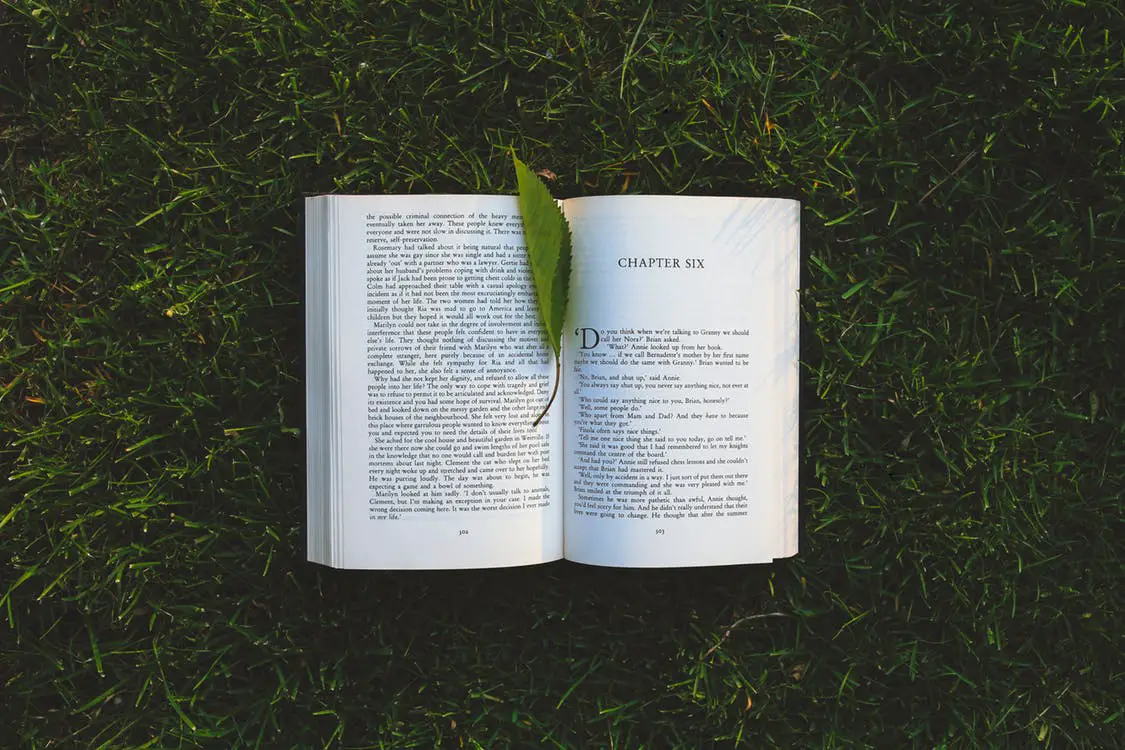
It is very mindful to read a novel because you can leave the thinking mind alone!
Mindfulness Exercise 15 – Count the steps you take (light mindful walking)
Are you going somewhere? Then walk with attention. this can be done very simply by just counting your steps. You can also do the official form of mindful walking.
Mindfulness Exercise 16 – Mindful Walking
You don’t have to do mindful walking as an ‘official, formal exercise’. You can just insert little moments of mindful walking throughout your day. It is nothing more than deliberate fiddling.
If you walk to the supermarket or post a letter, walk in complete peace. Slowly and without any haste. Instead of walking straight to your goal, look around you on the street. You take in the world and you pretend to see everything for the first time.
This is actually also essential if you work at your desk. It is important for the health of your back to get up every half hour. Just keep in mind that you are not going to strive for that goal of relieving your back. The intention of mindful walking is to enjoy walking itself.
The official form of mindful walking – which you will find in the official mindfulness curriculum – involves feeling the bottom of your foot touching the ground and taking the time to walk. You really walk with attention. For complete instructions, please refer to the accompanying article on mindful walking .
You can walk mindful when you walk to the supermarket, take a nature walk, walk to a coffee point or walk the dog. Walk without haste, but slowly. You can pay attention to the following things:
- How can I bring my attention to my feet?
- Can I also distinguish between the bottoms of the feet, the sides, the tops, the heels and ankles?
- What do I notice in how my foot unwinds?
- And what do I notice how my foot pushes off?
- Here you will find more instructions on mindful walking.
Feel how you are carried by the ground: make contact with the ground.
Mindfulness Exercise 17 – Keep track of difficult communication moments

What happens when you recognize difficult communication moments? Then you will be more aware of your communication challenges, allowing you to bring more presence and alertness to your communication next time.
So record a difficult communication moment every day, and write it down in your diary. For example, pay attention to the following:
- Who was the difficult communication with and what was the subject?
- How did this situation start? What was the trigger?
- What was your intention? But what was the actual result?
- What was the intention of the other? But what did the other actually get?
- How did you feel while it happened? And after it happened?
- What kind of thoughts and feelings do you have now that you look back at that situation?
This and the next few exercises are by Dr. Vincent van der Burg.
Mindfulness Exercise 18 – Recording Thoughts
Pay attention to thoughts for a week and also pay attention to what activates them. The intention is to become aware of your thoughts. Record them in your journal. You may notice the following:
- What were the thoughts today?
- Were they helping or not?
- What made them activate?
- With every thought, ask yourself, is that true, or was it just me making it up?
Stop becoming aware of it. We don’t have to think about it and we don’t have to do anything with it. Everything is alright.
Mindfulness Exercise 19 – Breathing Space!

Every day you can briefly do ‘Breathing Space’. What does this three minute exercise entail? Deliberately evoking moments of awareness in everyday life! Noticing whatever is present without judgment, so that you deal with life in ways that are less conditioned and more appropriate for the situations you encounter.
How do you do that? For example, you apply Breathing Space to the middle of the day, during a moment when you are ‘in the middle of things’. This is very effective during stressful or unpleasant moments. For example, if you are worrying or if you have an emotion. The most important thing is to remember to do this every day. It’s only three minutes, so it’s easy to fit in.
Stop, pause & pray.
The short mindfulness exercise ‘Breathing Space’ consists of 3 steps and a preparatory step:
Preparatory step: Stop!
We start by breaking the pattern. Make a hard ‘stop’ by stopping what you are doing.Step 1 – the first minute: feelings, emotions and thoughts
We first think for a minute about how things are now. So briefly notice your body and mind, including your feelings, your emotions, and your thoughts. How do I feel now? You make an inventory of what it is like at the moment. If necessary, mention (out loud) what you feel / experience.Step 2 – The Second Minute: Breathing Now
focus on your breathing in the abdomen for a minute. Follow how your belly goes up and down. Just that. Also, feel what else you feel as breath comes in and out again.Step 3 – the third minute: mini body scan
Now bring your attention to your entire body and do a quick mini body scan. How is your body now, what can you be aware of? What sensations are there you can notice? You just need to register this. Notice further how that is for you.Closing Step – Non-identification
Realize that you have just observed your feelings and thoughts from a distance, so that you are not them . They come and they go, and the only constant is your Self.
During this exercise, notice how feelings, sensations, and thoughts come and go, and how they change intensity and feeling.
You will return to mindful awareness. You create more space and a broader perspective, which makes it easier for you to deal with a situation, instead of experiencing it on automatic pilot. A final note is: don’t take this exercise too literally and do it intuitively.
Mindfulness Exercise 20 – Breathing Space ‘Extra Light’
With this ‘extra light’ version of Breathing Space you only go into awareness of what you feel. So only step 1. This is a shorter version of Breathing Space. We are not going to follow all kinds of steps for this mindfulness exercise.
All we do is become aware of an unpleasant emotion that we are experiencing. When you feel stress, be aware of your stress. If you feel irritation, be aware of your irritation. When you feel anger, be aware of your anger. Once you do that, you won’t get lost in it anymore.
Mindfulness Exercise 21 – Bringing Awareness to Reaction Moments
Be aware of automatic habit-based stress responses and behaviors for an entire week, without trying to change them. Be aware of the feeling when you are stuck in conditioned patterns of behavior, when you feel blockages, numbness and distance from the here and now. Bring awareness to moments of reaction, and explore options for responding to these moments with more mindfulness, space, and creativity.
Reminder: the breath is an anchor to take a break and make more conscious choices.
Mindfulness Exercise 22 – Recording Stressful Events

Record stressful and unpleasant events for a whole week. You may make one entry per day. Take the following with you:
- What was the stressful or unpleasant experience / event?
- Were you aware of it when this happened?
- What did you feel then? And what feelings, emotions and thoughts took place during this event?
- And now that you’re writing this down, what do you notice? For example about your thoughts?
The above exercise was devised by Dr. Vincent van der Burg.
Mindfulness Exercise 23 – Loving Kindness: Compassion for Yourself and Others (Metta Meditation)
The loving kindness mindfulness practice (Metta meditation) helps you express an extra sense of peace for yourself and your surroundings.
Do this exercise to feel compassion for others and do it especially for self-compassion. You can find both aspects in the accompanying article. You can also enhance the self-compassion aspect by using some of these affirmations and by doing these self-love exercises.
Mindfulness Exercise 24 – Extensive breathing exercise

Breathing is so special that it is worth dedicating a whole meditation to it. Therefore, use the exercise for the breathing exercise .
Mindfulness Exercise 25 – The 4-7-8 Breaths
With this breathing exercise you will really take a deep breath. Deep breathing affects your mood, body and mind, among other things. You slowly become relaxed, calm and grounded because you focus on your breathing. This makes this exercise excellent to use to fall asleep.
Count in 4 beats, hold for 7 beats and exhale for 8 beats. While doing this, hold the tip of your tongue against the roof of your mouth, slightly or slightly off your front teeth. You can also make the typical ‘woosh sound’ when you exhale. Do this entire cycle a total of four times.
Optionally, you can also draw a square in the air with your finger: up on the inhalation, to the left when holding in, down on the exhale, then to the right and finally up again on the inhalation.
Mindfulness Exercise 26 – Balancing Breathing Between Your Nostrils
This is a special way to make a breathing exercise even more mindful. Read the accompanying article on balancing your breathing between your nostrils.
Mindfulness Exercise 27 – Breathing Exercise ‘Extra Light’
Eckhart Tolle likes ‘mini meditations’. He represents one conscious second in which you briefly watch your breathing. Maybe it could also be two seconds or ten seconds. Maybe you slow down and deepen your breathing a bit too, so that it’s not shallow breathing …
More is really not necessary. You can sprinkle these mini meditations into your day to bring more alertness to your day.
In this way we can use the breath as an anchor during the day – without the use of a meditation cushion , but just during the daily moments of stress and joy.
- Someone is annoying you at work and you are about to get lost in a sea of anger? Take a deep breath and use the breath to regain control of the boat.
- Someone says something to you that hurts you, sending you into a spiral of depression? Take a deep breath and take control of your boat.
- Arguing with yourself? Back to your breath.
- Sad? Back to your breath.
- Worrying in your head? Back to your breath.
- Are you provoked? Back to your breath.
Once you are aware of your stress, return your attention to your breath with a smile.
Mindfulness Exercise 28 – Add a mantra to each breath

This serves as an extension to the basic breathing meditation:
- Take an inhale and say aloud a mantra such as: “Focus …” Or, “I am …”
- Exhale using another word: Rest … Or: “Present …”
- And breathe in again: Focus …
Keep it up for a while.
You can also do this with mantras that are longer than one word. Take a deep breath through your stomach – so actually let your stomach get bigger. Then let all the air out, along with a mantra like, ‘I let go of everything that is not mine, what is not today and what is not now.
This is also an exercise by Dr. Vincent van der Burg. In the navigation menu of this website you will find a link to his mindfulness training.
Mindfulness exercise 29 – Do a short body scan (light & extra light)
Because the body scan exercise is at the beginning of the 8-week mindfulness curriculum, this exercise assists many people as their introduction to their first week of mindfulness. The homework often means that you keep this up for 45 minutes, but you can certainly do it very shortly.
- Light: Just scan your body really fast in a few minutes , part by body part.
- Extra light: Just move your fingers or your toes. Feel your feet on the ground. Then you cannot be in your head. This is a mini meditation of a few seconds.
Mindfulness Exercise 30 – Mountain Meditation
The mountain meditation teaches you, among other things, not to let your emotions be influenced by external circumstances.
Mindfulness Exercise 31 – Learning Mindfulness From Nature

Some mindfulness exercises are great for doing at home, and others are especially for the outdoors. Take a walk and be surprised by all the mindfulness lessons of nature.
Mindfulness Exercise 32 – Sensory Awareness Exercises
You can do very fun games and exercises with mindfulness. Read the accompanying article about these observation exercises.
Mindfulness Exercise 33 – Be aware and awake throughout your day
Practice informally when you are not doing the formal mindfulness exercises, and stay as aware and awake as possible throughout the day. Where are you now, what do you hear, what do you see, what do you taste, what do you feel?
Mindfulness Exercise 34 – Make It Easy for Yourself: Enjoy the little things in life

Make it as easy as possible for yourself. Choose 1 thing to be mindful. It can be super small: enjoy the little things in life. For example wash your hands. No more (and no less, but that’s impossible). You are doing very well because of this!
The little things? The little moments? They are not that small!
– Jon Kabat-Zinn
Mindfulness Exercise 35 – Mindfulness During Troubled Situations
You can do mindfulness anytime, anywhere, even during noisy or ‘hectic’ situations. So in many cases you don’t have to do this ‘exercise’ completely, and in many situations you wouldn’t be able to. You can also accept noise as it is. You can let go of your inner resistance to the noise. This acceptance of ‘the moment as it is’ also brings you to the calm of inner peace.
This exercise can be used in preparation so that you are ready for the exercise you want to do next. You add a special dimension to your mindfulness if you make special time for yourself, where you sit in a quiet place where you will not be disturbed. This is what this ‘exercise’ is about.
The steps:
- Sit quietly in a place where it is quiet and where you will not be disturbed.
- Do not sit with your back to a (busy) open space.
- Assume a comfortable, natural sitting position.
- Let both feet touch the ground in front of earth and make sure that your arms and legs are not crossed so that the energy passing through you can flow and there are no blockages in your body. The left and right hemispheres of the brain can also make contact with each other more easily.
- Close your eyes.
- Be aware of your body.
Continue to this breathing exercise to complete your preparation with a few conscious breaths.
Mindfulness Exercise 36 – Just touch something
Don’t you feel extra alive when you touch something? Just touch things more often – consciously or unconsciously. Go crazy and hug your car, for example. Or use the Japanese relaxation technique where you lightly squeeze each finger of your hand one by one.
Mindfulness Exercise 37 – Connect with Your Heart
Below you will find a very nice mindfulness exercise that involves your heart. Here you will find even more meditations with the heart.
- Close your eyes and put your hand on your heart.
- Breathe in peace, love and compassion every time. And exhale. At the last time, feel your heart completely filled with peace, love and compassion.
If you do this often, after a while, all you have to do is put your hand on your heart and the rest will follow.
Mindfulness Exercise 38 – Mindful Listening in a Conversation
The upcoming talk exercises are by Dr. Vincent van der Burg. Because it is especially important in a conversation to be mindful.
- Choose a practice partner.
- Have your practice partner talk about something for 2 minutes. This could be anything.
- Listen with your full attention during the 2 minutes. Do not say anything. At most an affirmative nod or a ‘yes’. If the other person stops telling you, give space and attention to the silence.
Do not interrupt.
Do not correct.
Do not judge.Not blaming the other person for the problem the other is talking about. Think for one second that God created this human being. Are you insulting this person with your judgment? Then you insult God.
Just focus on the other person’s feelings.
Variation and logical continuation of this exercise: do it now ‘in the wild.’ During your next conversation (do!) You have full attention for your conversation partner. No cell phone or other things. No interruptions, no questions, no judgments and no advice. Also, don’t ‘wait for your turn’. You are completely there for the other.
Also apply all other listening techniques .
Mindfulness Exercise 39 – Mindful conversation in conversation, including being mindful of yourself

This is also a wonderfully refined communication-mindfulness combination exercise by dr. Van der Burg. In this exercise, we will add two elements to what you had already done in the previous exercise. This time you will have a conversation with someone for four minutes, using the following elements:
- Mindful listening: listening with your full attention to what the other person is saying. You did this in the previous exercise.
- You will also – sometimes or constantly – make contact with your own breath and your own feelings during the conversation. Just be aware of it. Stay with yourself while you are with the other. That is the art.
- You also sometimes summarize to check whether you heard the other person correctly: ‘If I understood correctly, you said that …’
- Wait three seconds if you want to say something. In this way you are also in time to discover that you are talking, judging or gossiping negatively.
If you want to do this exercise with your life partner, look at the bottom of this article for the variant for partners.
Mindfulness Exercise 40 – Make contact with someone at all
A good moment of contact with a nice person is certainly a good mindfulness exercise. Call an acquaintance or friend, show interest, ask for advice, listen and pay attention.
Mindfulness Exercise 41 – Mindfulness on Open Awareness
You can see this exercise as a free form of mindfulness meditation. You open up to everything that is there and what happens spontaneously. You allow what happens.
If it is your breath that you suddenly become aware of, then you have full attention to it. Is it suddenly a sound, thought, tension in your body or emotion, then you have your full attention … until you become aware of something else again.
Let everything be there and observe it. Be fully present with whatever is happening right now.
Mindfulness Exercise 42 – House cleaning as a Mindfulness Activity
Housekeeping is an excellent mindfulness activity. For example cleaning and especially ironing. And then don’t think about God while doing it – entirely according to the Zen feeling. Just iron.
Beauty and cleanliness = mindfulness. So also clean up the kitchen immediately after you have eaten. Notice how much you can enjoy doing this with your full attention, while also feeling that your ego is struggling and doesn’t feel like it.
Mindfulness Exercise 43 – Sound Scale Meditation
Only listen to the sound of a singing bowl. Your attention focuses on the sound until you can no longer hear it. Then you take deep in and out. You are only concerned with the tone and vibration of the sound.
Mindfulness exercise 44 – Single task: apply focus and minimalism in your (work) life

Taking active steps to bring more focus and peace to your life is also a mindfulness technique. How? Turn off your email notifications, silence your phone and work on just one task. How else can you do this? Read this article about focus and this article about minimalism.
Mindfulness Exercise 45 – Have a digital detox for an afternoon or a day
This may mean that you do not take your mobile with you when you step out the door. Or you take a bigger step so that from now on you decide to be completely offline on Sundays.
Mindfulness Exercise 46 – Show a virtue such as kindness, gratitude, or curiosity throughout the day
Make a conscious choice to spend an extra day practicing gratitude , having patience , accepting it, having confidence , not gossiping anymore, being more helpful to people, or being considerate when a situation could use a helping hand. This way you become much more aware – in other words, more mindful. You can find more virtues here.
Mindfulness Exercise 47 – Live a Day Without Judgment
Place the intention not to judge for an entire day. This means, among other things, that you no longer give your opinion and advice without being asked, that you no longer think anything about anything inside and that you no longer have high or low expectations of a situation. You can find more ways not to judge here.
Mindfulness Exercise 48 – 50: Mindfulness Exercises With Your Partner
Use the following three mindfulness exercises that you can do with your partner.
- ‘The circle’
- ‘Your movement is one with my movement’
- “How present is my partner with me?”
You can find these exercises at the bottom of the article on spiritual love relationship .
Mindfulness Exercise 51 – 67: Use these 17 exercises from these guided meditation texts
Use meditation texts to make even more mindfulness discoveries. Click here to go to these written meditations.
Mindfulness Exercise 68 – 86: Exercises for Feeling / Intuition and Pattern Breaks
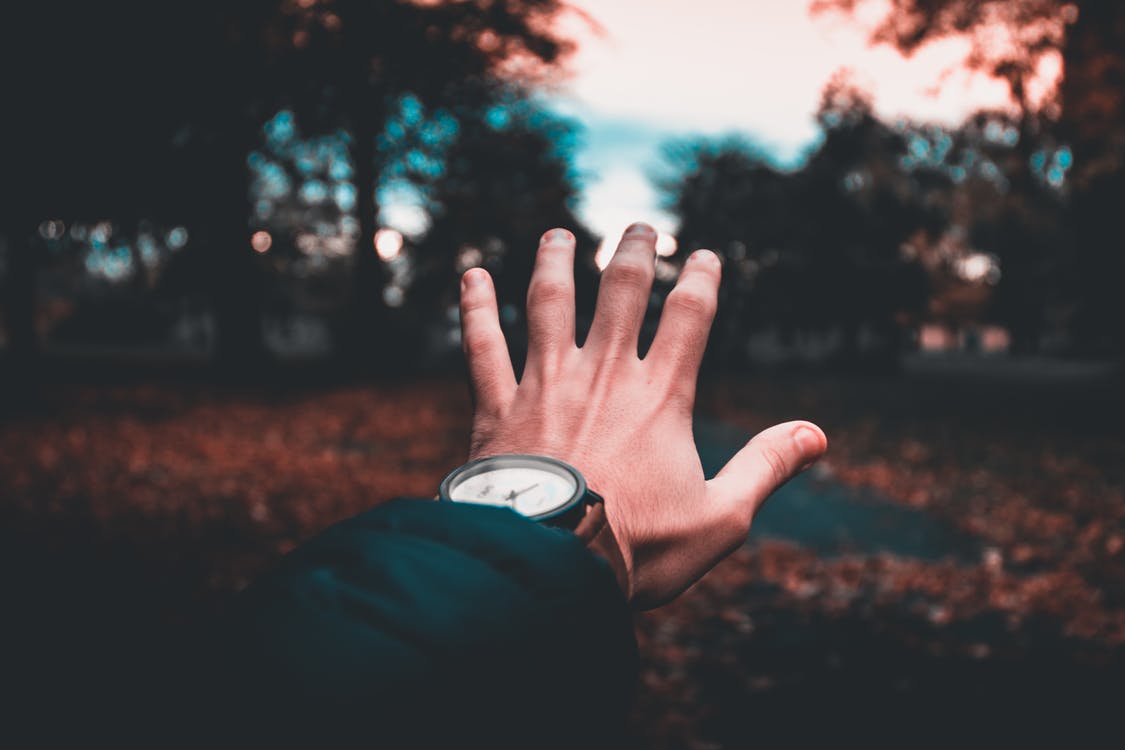
Use these 50 techniques and tips to get to your feeling / intuition . This is essentially what you do with mindfulness.
Use these 37 techniques to interrupt patterns . These are simply mindfulness exercises! Mindfulness breaks patterns!
Mindfulness Exercise 87: Sleeping Early and Waking Up Early
It is an act of awareness to stop letting your evening take over and just decide for yourself to sleep early. Waking up early also makes your morning much richer and tastier – because you are simply at your best in the morning.
Mindfulness Exercise 88: Consider what you are satisfied with
What are you all satisfied and grateful about? Find out what all that is. Feel free to set goals about where you want to be and be equally aware of how satisfied you can be with what you have already (achieved), so that you do not strive too much for a future that does not exist and does not come.
Mindfulness Exercise 89: Cut out unimportant junk and take it easy
We mean this mindfulness exercise literally and figuratively. It’s a wonderful mindfulness practice to grab a Salvation Army bag and put everything in it that just gets in the way and takes energy.
From now on you will also cut the figurative mess out of your life. Never fuss about insignificant stuff again. Think bigger, think easier and think about the really important things in life. You can read more about this in this article about the art of not giving af * ck and this article about minimizing.
Mindfulness Exercise 90: Balancing Stones
Do you know what Zen is? Engaging in an activity – such as cutting wood, peeling potatoes, or carrying water – without thinking about anything else, such as God. Balancing stones makes that extra easy because you are looking for the balance points in the stones with full concentration.
Good luck with these mindfulness exercises!
Have fun!
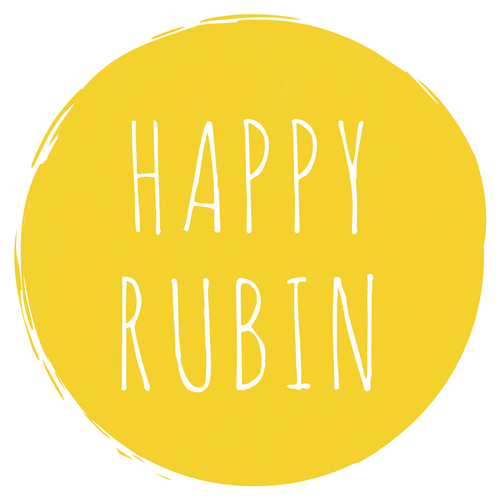
![5 Best Self Care Tips For College Students [#1 Advice]](https://happyrubin.com/wp-content/uploads/2021/09/the-best-self-care-tips-for-college-students-440x264.jpg)
![How To Stick To New Year’s Resolutions: 9 Tips [Smart & Sure Ways]](https://happyrubin.com/wp-content/uploads/2019/12/tips-voor-goede-voornemens-440x264.jpg)
![How To Stop Being So Hard On Yourself [9 Great Tips]](https://happyrubin.com/wp-content/uploads/2019/12/we-moeten-zoveel-van-onszelf-en-anderen-150x150.jpg)

![19 Best Ice Breaker & Get-To-Know-Eachother Games [Fun & Simple]](https://happyrubin.com/wp-content/uploads/2018/02/leukste-ijsbrekers.jpeg)
![Becoming More Social: 41 Tips [Improving Social Skills] [List]](https://happyrubin.com/wp-content/uploads/2018/06/sociale-vaardigheden1.jpeg)
![How to start a conversation with anyone: 15 tips [Making contact]](https://happyrubin.com/wp-content/uploads/2017/08/gesprekstechnieken1.jpeg)
![372 Friend Tag Q&A Questions [Best Friend Quiz]](https://happyrubin.com/wp-content/uploads/2019/05/best-friend-tag-vragen-voorbeelden.jpg)



![Clingy & controlling behavior of partner/date [Extreme examples]](https://happyrubin.com/wp-content/uploads/2020/06/claimerig-gedrag-van-partner-eigenschappen-en-voorbeelden-150x150.jpg)

![How to recognize if a man is in love [Signals & his body language]](https://happyrubin.com/wp-content/uploads/2020/05/verliefd-gedrag-van-mannen-herkennen-150x150.jpg)

![Free will and religion / theology [Verses & Quotes on free will]](https://happyrubin.com/wp-content/uploads/2020/10/religion-on-free-will-quotes-1050x640-1-150x150.jpg)
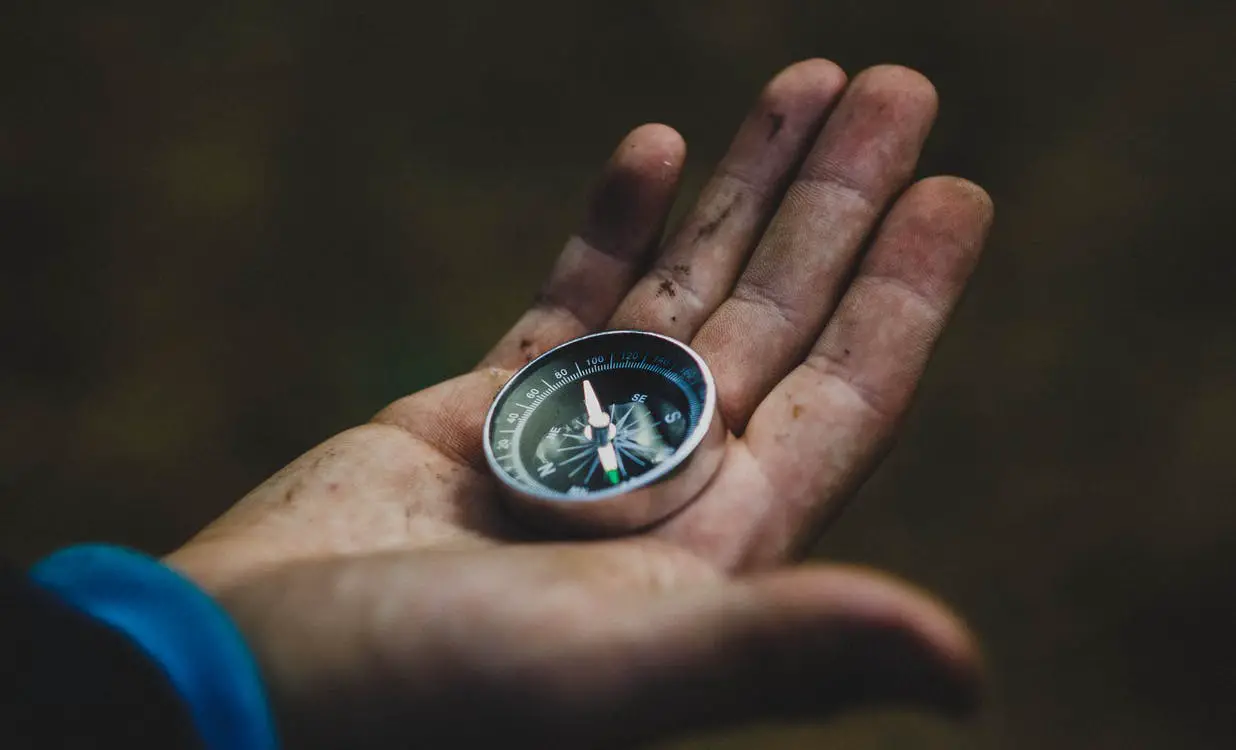
![Dealing With Setbacks & Hardship [Lessons & Examples]](https://happyrubin.com/wp-content/uploads/2018/11/omgaan-met-tegenslag-tips-hoe-dan.jpeg)
![NLP Agreement Frame: Use these exact sentences [Examples]](https://happyrubin.com/wp-content/uploads/2020/10/agreement-frame-nlp-1125x640-1-440x264.jpeg)
![122 Best Comebacks In Any Situation [Best Examples]](https://happyrubin.com/wp-content/uploads/2020/06/beste-comebacks-technieken-tips-440x264.jpg)
![Using Hypnosis to Stop Smoking [HowTo]](https://happyrubin.com/wp-content/uploads/2020/05/stoppen-met-roken-door-hypnose-150x150.jpg)
![Presuppositions language pattern: meaning & examples [NLP]](https://happyrubin.com/wp-content/uploads/2020/04/wat-zijn-vooronderstellingen-150x150.jpg)
![Peripheral Vision: Meaning & Exercise [Essential Skill]](https://happyrubin.com/wp-content/uploads/2020/04/perifeer-zicht-trainen-tips-150x150.jpg)

![How To Start A Coaching Business [21 Smart Tips]](https://happyrubin.com/wp-content/uploads/2018/11/coachingpraktijk-starten-tips.jpeg)
![How to make dreams come true? [33 tips to realize dreams 100%]](https://happyrubin.com/wp-content/uploads/2018/05/dromen-mijlpalen.jpeg)
![How To Become Rich? 27 Millionaire Tips [Guaranteed To Work]](https://happyrubin.com/wp-content/uploads/2018/01/hoe-kan-ik-rijk-worden.jpeg)
![77 Best Online Marketing Tools [Recommendations] [Also Free]](https://happyrubin.com/wp-content/uploads/2018/08/beste-onlne-marketing-tools-tips.jpeg)
![Complete List Of Virtues & Qualities [Including Explanation]](https://happyrubin.com/wp-content/uploads/2018/12/kernkwaliteiten-uitleg.jpeg)
![Being Attentive: How Do You Do That? [Meaning & 9 Tips]](https://happyrubin.com/wp-content/uploads/2019/05/attent-zijn.jpg)
![Being Conscientious: Meaning Of This Virtue [Explained]](https://happyrubin.com/wp-content/uploads/2018/07/Consciëntieus-persoon.jpg)
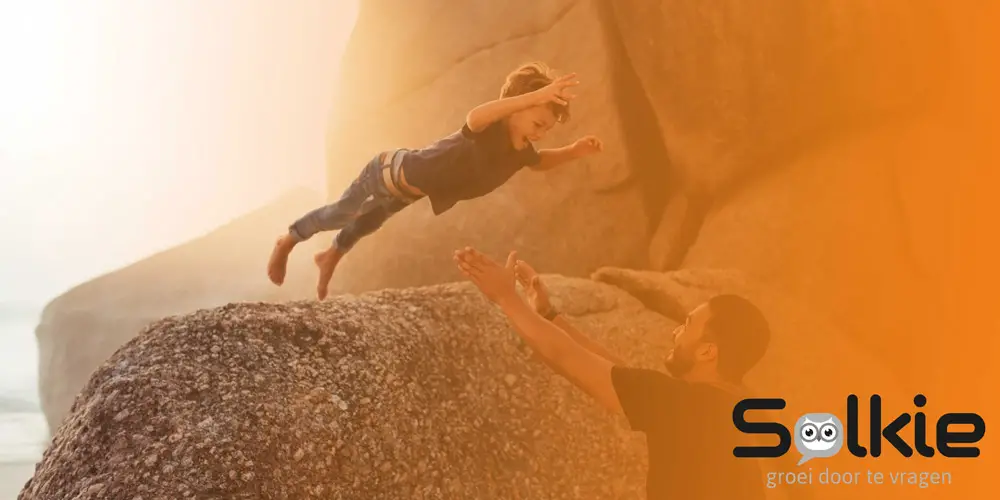
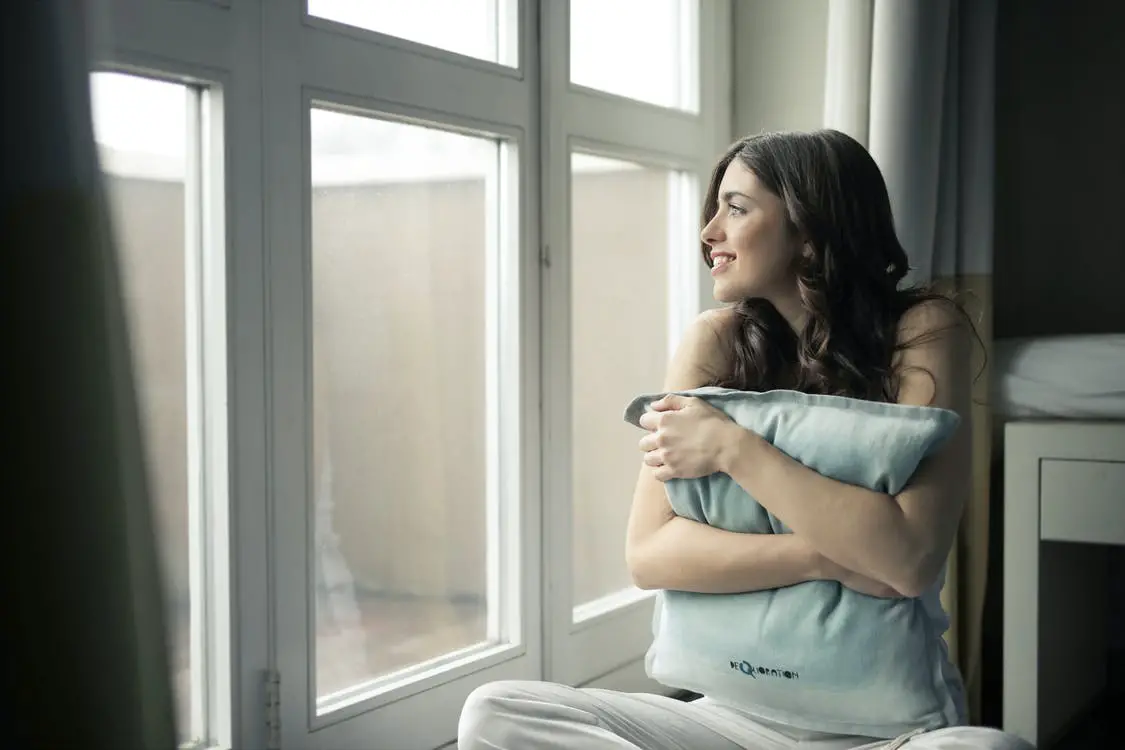
![Best Books About Burn-Out [Top 10] [Update 2025]](https://happyrubin.com/wp-content/uploads/2020/06/beste-boeken-over-burnout-lijst-440x264.jpg)
![Best Self-love Books [Top 10] [Update 2025]](https://happyrubin.com/wp-content/uploads/2020/04/beste-boeken-over-zelfliefde-aanraders-440x264.jpg)
![Life changing books: 10 books that change your life [2025 Update]](https://happyrubin.com/wp-content/uploads/2020/03/levensveranderende-boeken-tips-150x150.jpg)
![Top 10 Best Books: Recommendations Per Genre [2025 Update]](https://happyrubin.com/wp-content/uploads/2019/12/best-books-per-genre-150x150.png)
![Best Books On procrastination: Must Reads [List] [2025 Update]](https://happyrubin.com/wp-content/uploads/2019/11/beste-boeken-over-uitstelgedrag-tips-150x150.jpg)
![Joe Dispenza: Events To Attend [2025 & 2026] [All Info]](https://happyrubin.com/wp-content/uploads/2020/02/joe-dispenxa-events-440x264.png)
![Best Online Study Options [Online Education Top List]](https://happyrubin.com/wp-content/uploads/2019/03/best-home-study-options-440x264.png)
![Teachable Review & Experiences 2025 [Bad Online Training Tool?]](https://happyrubin.com/wp-content/uploads/2020/02/Teachable-review-ervaringen-150x150.png)
![Audible Review, Experiences & Special Discount [Scam?]](https://happyrubin.com/wp-content/uploads/2020/01/audible-review-ervaringen-150x150.png)
![Guest Posts Wanted [Free & Always Directly Accepted]](https://happyrubin.com/wp-content/uploads/2019/05/gastbloggen-regels.jpg)
